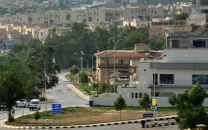The Kabul River question
Kabul River does not have to become another fault line

Rivers have long connected nations even when politics failed to. Yet today, the Kabul River which winds through Afghanistan before joining Pakistan's mighty Indus near Attock has become both a symbol of shared geography and a source of quiet anxiety. As Afghanistan announced its dam construction plans on the Kunar and Kabul rivers, concerns in Pakistan are resurfacing over the absence of a formal water-sharing framework between the two neighbours.
Afghanistan's hydrological system is vast and varied, divided into five main river basins: the Amu Darya, Indus-Kabul, Northern, Harirod-Murghab and Helmand. Of these, the Indus-Kabul basin forms the most critical link between Afghanistan and Pakistan. The two countries share nine rivers in total among which three are flowing into Khyber-Pakhtunkhwa and six into Balochistan.
On average, about 23 million acre-feet (MAF) of water flows from Afghanistan into Pakistan each year, with roughly 17.5 MAF coming from the Kabul River alone. Interestingly, 8 MAF originates from Pakistan's own Chitral River, which crosses into Afghanistan before rejoining the Kabul River and flowing back downstream. Nearly 80 per cent of Khyber-Pakhtunkhwa's agriculture depends on this system which shows how intertwined the two hydrological destinies are.
Afghanistan's plans, however, are ambitious and expanding. It aims to build 12 new dams alongside big hydropower projects, backed by foreign aid and Indian technical assistance. If these constructions materialise, Pakistan's inflows could drop by about 3 MAF, reducing total availability to 14 MAF per annum which is a shortfall of nearly 16 per cent.
From Kabul's perspective, these projects are acts of sovereignty — an attempt to secure energy, food and water for a population still recovering from decades of war. Current Afghan water usage from shared rivers stands at only 1.8 MAF, projected to double to 3.6 MAF by 2030. As a landlocked and mainly agrarian country, it is not only inevitable but necessary to tap into its natural resources. Yet from a downstream lens, unilateral action in the absence of coordination risks destabilising an already delicate ecological as well as political balance.
Pakistan's apprehensions, therefore, are not based on opposition against Afghanistan's development, but on the uncertainty of being left out of its planning. Past attempts at formalising water cooperation, most notably in 2003-2014, failed to produce a binding agreement. The result is a diplomatic grey area where technical concerns meet political hesitation.
Compounding this are regional alignments. India's involvement in Afghanistan's water infrastructure projects, though within Kabul's sovereign right to seek partnerships, is viewed by many in Islamabad as an extension of hydro-strategy; a means of exerting indirect pressure downstream. The Indus Waters Treaty has survived wars and politics yet its stability relies on the respect to mutual dependence. The absence of a similar framework between Pakistan and Afghanistan leaves both nations exposed to misperception and reactive policymaking.
Climate change intensifies the urgency. Glacial melt and erratic rainfall patterns in the Hindu Kush region are already altering river dynamics. As water becomes more variable, so too will dependence on man-made regulation systems, like dams. Without cooperative management, the risk of environmental stress turning into political friction grows.
What remains missing is a shared vision. Pakistan and Afghanistan have much to gain from cooperative hydrodiplomacy including data sharing, joint monitoring and seasonal coordination which could reduce uncertainty for both sides. The Kabul River does not have to become another fault line. It can be a point of renewal; a test of whether two neighbouring states can transcend inherited suspicion and build institutions that reflect interdependence rather than rivalry. Water, after all, does not recognise borders. It only follows gravity.















COMMENTS (1)
Comments are moderated and generally will be posted if they are on-topic and not abusive.
For more information, please see our Comments FAQ